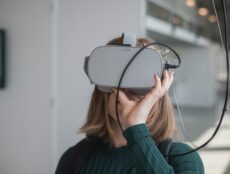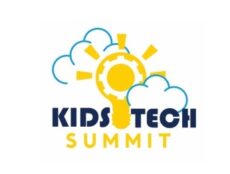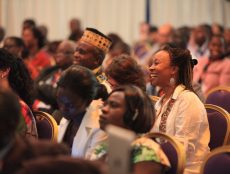
Articles
Editor’s Picks
K-12
Learning Math with Virtual Vs. Physical Blocks: How Do Kids Fare?
By Henry Kronk
September 19, 2019
More and more around the world, kids are using digital technology to learn concepts that have previously been taught with analog material. Virtual courseware allows for more personalization in the classroom and for students to progress independently on their own. In turn, teachers can more easily track the development of their students and assess more accurately where their knowledge gaps lie. But while these advantages are enticing, in many cases it remains unclear how learners learn in the digital modality. Early math instruction, for example, is seen as an especially promising area for developing digital course supplements. But do kids learn the same playing with virtual versus physical blocks? A team of researchers from Uruguay, Portugal, and Spain sought to answer this question.
More specifically, they wanted to know how a virtual versus traditional modality would affect early math learners as they acquired fundamental concepts of arithmetic. To do this, the team developed an online math game, BrUNO, that kids can play on a tablet and that could also be recreated in real life.
Physical Objects Can Help Out with Early Math Instruction. But What About Virtual Objects?
The game involved providing learners a set of differently sized blocks that corresponded to a number value. Learners were then asked to recreate other number values using a combination of blocks. To represent the number 5, for example, learners might have used a 2 block and a 3 block or two 2 blocks and a 1 block.
They then brought these games to three first grade classes in a Montevideo elementary school. In all, 60 first graders participated. They were split into three different groups. One played the digital online game, the next played the game with physical blocks, and the third control group was taught with traditional instruction. Everyone was assessed with a widely accepted standardized test before and after the trial, which lasted 13 days in total.
At the end of the trial, the two test groups showed improvement over the control. But between the virtual and physical learners, the researchers found no significant differences in ability. But the researchers did find other interesting differences.
(They refer to the virtual interaction group as VI, while the tangible interaction group was notated as TI.)
The team writes, “It was observed that the TI and VI groups significantly differed in the numbers of blocks used to compose a number. VI employed significantly fewer blocks compared with TI, showing that the different type of manipulatives could have led to different problem solving strategies. TI children opted to compose numbers using more varied combination of blocks, i.e., they used more number composition strategies. This suggests that the affordances of physical objects do trigger more diverse solutions, which have been advocated to prompt better learning experiences in numerosity knowledge and specifically foster mastery of basic number combinations.”
Online Learners Were More Efficient. IRL Learners Were More Creative.
In other words, the virtual interaction group tended to get to the answer as quickly and efficiently as possible. The tangible interaction group, meanwhile, were more creative and varied in how they came to a solution.
The researchers don’t place an inherent value with either tendency, but their analysis did overturn other findings.
“We did not find a correlation between the number of blocks employed by children and mathematical improvement in general (all children analyzed together). Nevertheless, when children were divided according to their improvement in mathematics (Post-Test − Pre-Test) after the intervention, it was observed that the greater improvement group showed a positive correlation between number of blocks employed and gain in mathematical knowledge, which was not found for the Worse Improvers.”
Learners who demonstrated more growth used more blocks. There might be a few reasons for this.
“This outcome may suggest that an optimal performance in number composition (understood as fewer pieces used to form a number equals better performance) would not necessarily lead to a better learning experience. Another hypothesis would be that children who do not already have this mastery in number combinations, i.e., efficient, fast and accurate responses, would benefit more from employing manipulatives to solve additive composition and this might be the case for the “Better Improvers.” Children who improved at maths during training were the ones using more varied block combinations. This is connected to the fact that the use of a greater variety of strategies can result in a better learning outcome.”
There is yet another fold to these findings. The researchers observed a negative correlation between pre-test scores and the number of blocks kids used. The more accomplished at math the learner was before the trial, the fewer blocks they tended to use overall.
In explanation, the authors write, “It may seem contradictory that children who obtained the best scores at TEMA-3 (better at mathematics at baseline) used fewer blocks whereas the Better Improvers tended to employ more. However, according to Sarama and Clements (2009), despite seeming paradoxical, those who are better at solving problems with objects, fingers or counting are less likely to persist in these strategies in the future—as already reported by Siegler (1993)—but this is because they trust their answers and therefore move toward more precise strategies based on the retrieval of number combinations, leaving behind what once served as a scaffolding.”
This experiment did involve a very limited sample size, and that represents a significant limitation. But at the same time, it seems logical that students will learn differently in digital or virtual versus physical modalities. There is clearly more to learn about the effects on how people learn online versus in real life.
Read the full study here.
Featured Image: Hello I’m Nik, Unsplash.









2 Comments